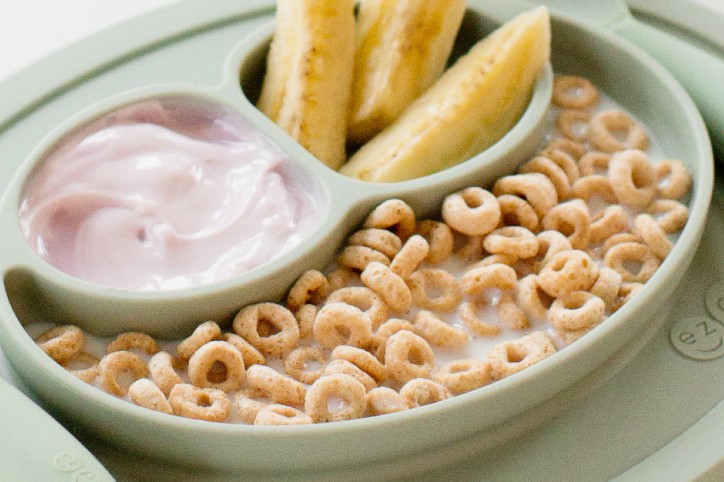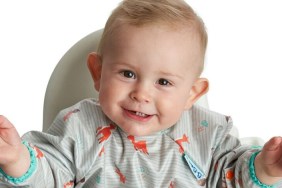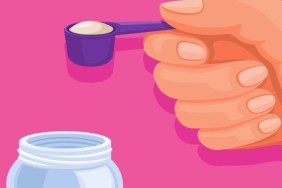Your baby will receive the majority of their nutrition from breastmilk or formula until 12 months of age. At around 6 months (depending on the baby’s readiness signals), parents start introducing solids – generally one food at a time from a bowl. “Once your baby has several foods that they enjoy, you can introduce a divided plate,” says Dawn Winkelmann, M.S, CCC-SLP, a pediatric speech and language pathologist and feeding specialist who works with ezpz, a kids plate and placemat company. “A sectioned baby plate or divided toddler plates have compartments that visually remind parents to serve a fruit or veggie, a protein and a carbohydrate at each meal.”
For divided toddler plates, the ezpz Mini Mat (see below) have three compartments that form an adorable smiley face. “The smile design puts babies in a positive mood for mealtime, which promotes the exploration of new foods,” says Winkelmann.
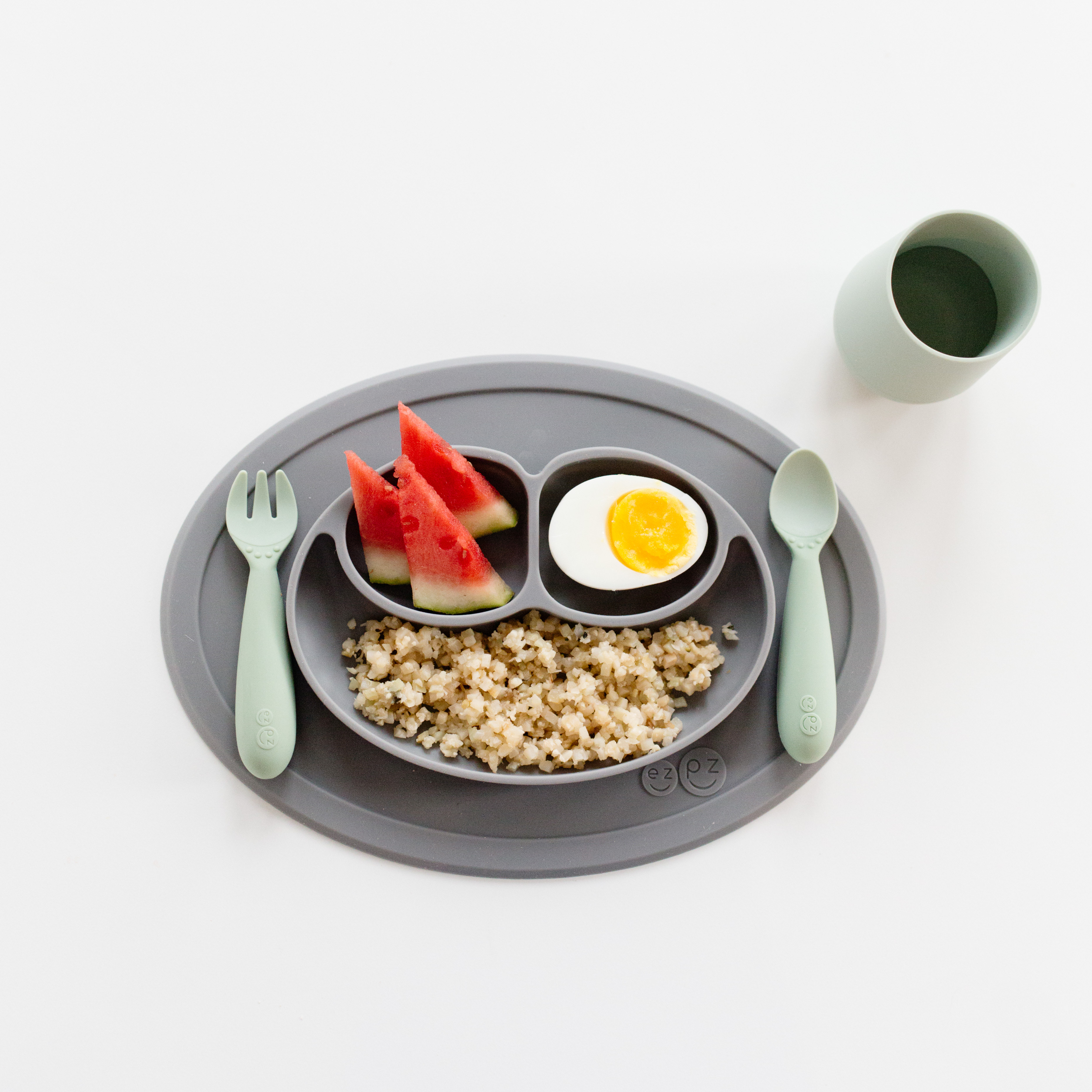
If you’re looking to start plates early – say six months – Miniware Healthy Meal Plate is an ideal starting tool for baby-led weaning. “The stable plate provides a larger canvas for exploring first finger foods and purees so this plate can be a great support as soon as solids are being introduced,” says Adam Bonnier, founder of Miniware. “One key feature to look for and which will allow a plate to be introduced earlier, particularly for training with cutlery, is whether the plate has a wall or some other border around the edge. A wall will help little ones to push up against to trap and catch the food onto their spoons or fork. It also provides a stable pivoting point to go from a horizontal movement across the plate and shifting to a vertical movement up to the mouth. A plate with a border will allow children to start earlier and help them train their fine motor skills with cutlery, while a flat and borderless plate is not ideal and would only be suitable for children who are older and have completely mastered using their cutlery.”
What are more specific benefits of divided toddler plates?
There are many benefits to divided plates, and one of the big ones is that many children will often go through an “isolated foods” phase where they prefer their foods to not touch each other and a food that is liked will often be refused if it is just touching a disliked food. “A divider can make them more comfortable to eat each food as its own dish and it can also help the child be less overwhelmed by too many undefined options,” says Bonnier. “The divider provides a framework for the meal and a clear presentation. It also can help parents remove some of the guesswork of which foods are liked or disliked.”
Bonnier also notes that he has found that divided toddler plates can be great for parents to use when composing healthy balanced diets for their children – for example always ensuring smaller divisions include a
portion of veggies, a portion of fruits, something with a fun texture etc. and a larger portion of
something more filling such as pasta or a sandwich if there is a larger area.
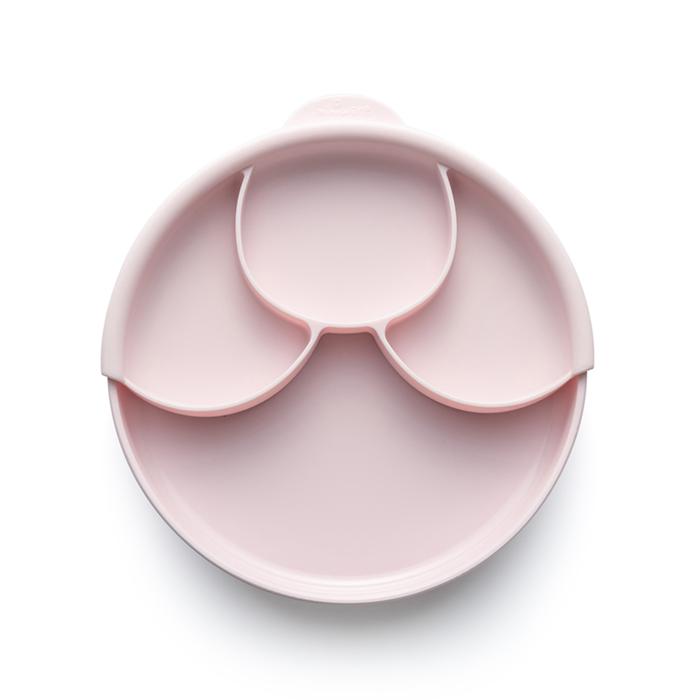
Transitioning to regular plates
Regular plates have their own benefits, in particular there comes a time when a little one has grown out of the ‘isolated foods’ phase and may want to eat with a plate just like their parents use. “At that point the divided plate suddenly becomes obsolete and often is tossed out,” says Bonnier. “Other benefits of regular plates are that you can encourage exploring what happens when you combine ingredients and flavors. In addition a larger space helps children improve their cutlery skills without relying on the divider borders too much. Most children’s plates we see are either one way or the other, however our Healthy Meal set (pictured above) was designed with a removable divider so you can get the benefit of both options! As a bonus the removable silicone divider can be used as a side tray for sauces or a snack plate on its own.”
There are important things to look for when shopping for divided – and regular – plates.
You want to make sure whatever products you are buying are free of potentially toxic chemicals like BPA, BPS, PVS, phthalate and latex. Winkelmann also suggests only opting for products that are dishwasher, microwave and oven-safe as well as made from silicone.
“A good, easy check is to see if the product has passed both FDA standards as well as LFGB, which is the stricter European counterpart,” says Bonnier. “After that, parents can pay attention to see if the products are made from or infused with petroleum-based plastics or not. The safest choice is to avoid all petroleum
plastics and instead choose cleaner more renewable materials, like silicone.”
